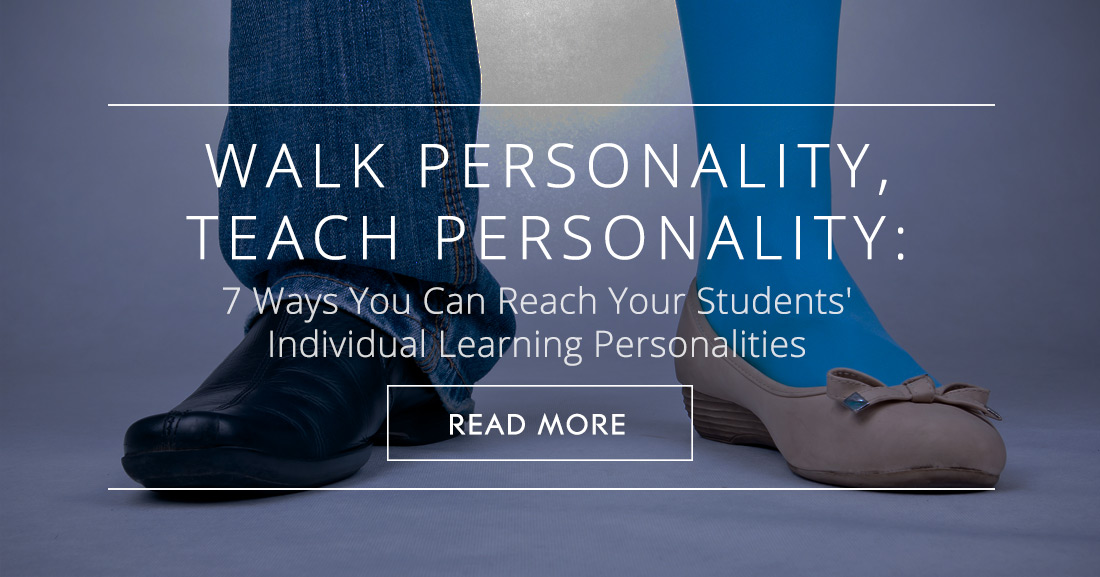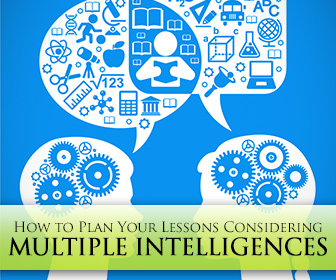Walk Personality, Teach Personality: 7 Ways You Can Reach Your Students' Individual Learning Personalities


How can we know or even measure something like this? What are the parameters? Many will have answers to these questions and many others will probably ask themselves, what “intelligence” is and if we are all intelligent in the same way. For a long time, we knew who was “intelligent” and who wasn’t by using certain standardized tests. However, after a while, many realized these tests were able to demonstrate how “intelligent” we were in certain areas but not in others. Nowadays, thanks to the contribution of some theorists, we believe that we are all intelligent but in different ways. This makes a big difference in the classroom, and it is something we need to consider when planning. The trick is variety; if you have enough of it, you can’t go wrong. Let’s take a look at some great activities that demonstrate how to put variety in each activity.

This activity involves watching a short video or part of a movie. Write sequences of the story and cut them into strips. After watching, divide the kids into groups and have them put the sequences of the story in the right order on poster board. Once they are done, have them tell the story to the rest of the class or just the teacher. If necessary, you can provide images that can help them remember parts of the story. Since this activity involves problem solving, the use of a poster and verbal communication, it is ideal for kids with a mathematical – logical, visual-spatial and verbal-linguistic intelligence.
This is a great activity for kids to practice asking questions and also answering them. In this activity students stand in a circle and toss a ball to another student to ask them a question. They can use any verb tense or different verb tenses. Also, they can use vocabulary you have been practicing in class or any other vocabulary you want. This is a perfect activity for students who have a bodily-kinesthetic intelligence and need to move. Also, students with an interpersonal intelligence benefit from the interaction with other students.
This is a beautiful activity for those who love nature. This can be done in a park, garden or any other green and natural location. In this activity, they are given specific instructions regarding what to observe and afterward they work on their journals to write down all the information. Depending on what you are working on in class, they could simply describe what they see (objects and colors) or maybe what is happening in the garden (for example, “I see birds feeding their babies, ants marching in a line”, etc). This activity involves spending time with nature and also working quietly alone, therefore it is a good choice for children who have a naturalist and intrapersonal intelligence.
Now for some fun! Clear out a wide space in the classroom and make sure there is no clutter in that area. After that, divide kids into two or three teams, depending on how many you have. With tape, mark a path on the floor. One of the team members will be blindfolded and the others need to guide them along instructions that path by providing specific instructions. Make sure the blindfold is on before you mark the path with masking tape on the floor. It is an enjoyable activity that requires good communication and precise movements, so bodily-kinesthetic, verbal-linguistic and interpersonal intelligences will feel right at home.
This is a wacky activity where kids have to compose a song. Divide the class into three (or two) big groups. After that each student draws one piece of paper from two different bags. With them they have to make a sentence; creativity is welcome. When all the students have finished, they need to work together to compose a “wacky” song with the sentences they wrote. It is clear the song will not make much sense but that is the fun. This activity requires a lot of creativity and a taste for music. Also because there is communication and interaction involved, it is great for those who have a musical/rhythmic, interpersonal and verbal-linguistic intelligence.
Each student has a unique blend of all the intelligences though one or two could be more predominant. Remember, variety always makes the learning experience richer.